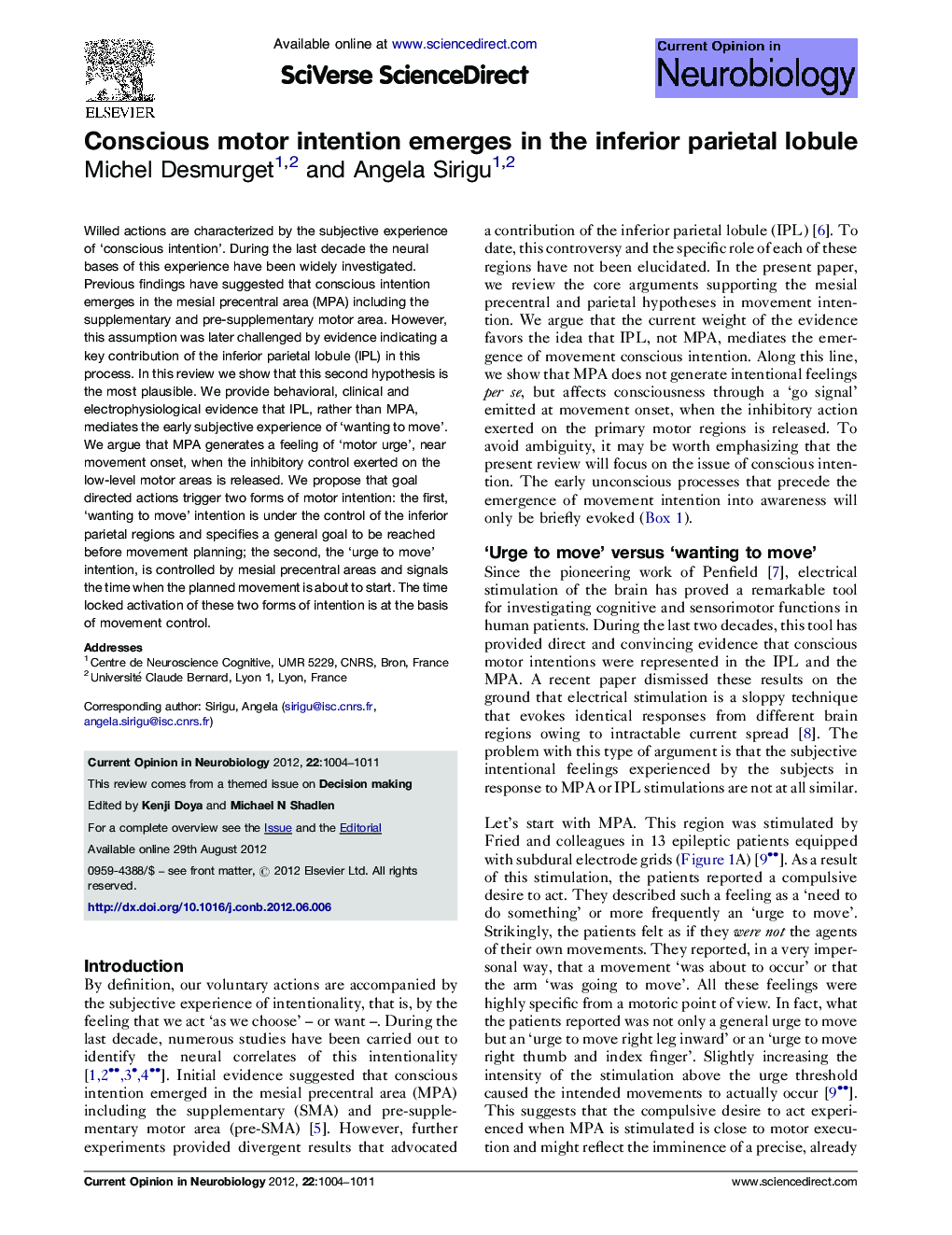| Article ID | Journal | Published Year | Pages | File Type |
|---|---|---|---|---|
| 6267264 | Current Opinion in Neurobiology | 2012 | 8 Pages |
Willed actions are characterized by the subjective experience of 'conscious intention'. During the last decade the neural bases of this experience have been widely investigated. Previous findings have suggested that conscious intention emerges in the mesial precentral area (MPA) including the supplementary and pre-supplementary motor area. However, this assumption was later challenged by evidence indicating a key contribution of the inferior parietal lobule (IPL) in this process. In this review we show that this second hypothesis is the most plausible. We provide behavioral, clinical and electrophysiological evidence that IPL, rather than MPA, mediates the early subjective experience of 'wanting to move'. We argue that MPA generates a feeling of 'motor urge', near movement onset, when the inhibitory control exerted on the low-level motor areas is released. We propose that goal directed actions trigger two forms of motor intention: the first, 'wanting to move' intention is under the control of the inferior parietal regions and specifies a general goal to be reached before movement planning; the second, the 'urge to move' intention, is controlled by mesial precentral areas and signals the time when the planned movement is about to start. The time locked activation of these two forms of intention is at the basis of movement control.
⺠Intention to move precedes movement planning. ⺠Inferior parietal areas trigger motor intention as a 'wanting to move' signal. ⺠'Wanting to move' is neurally dissociated from 'urge to move'. ⺠Precentral mesial regions are involved in movement release and generate the feeling of 'urge to move'.
